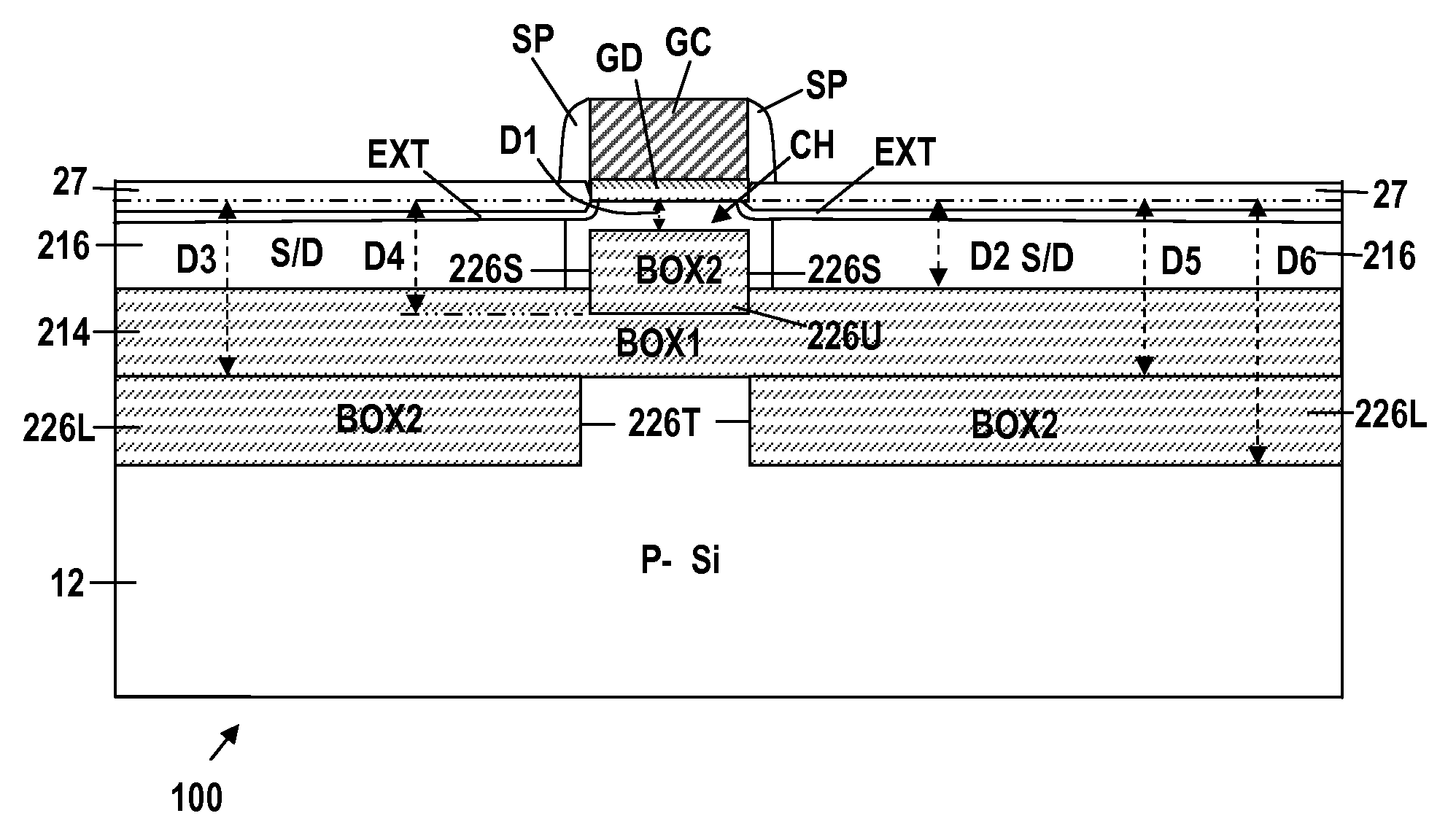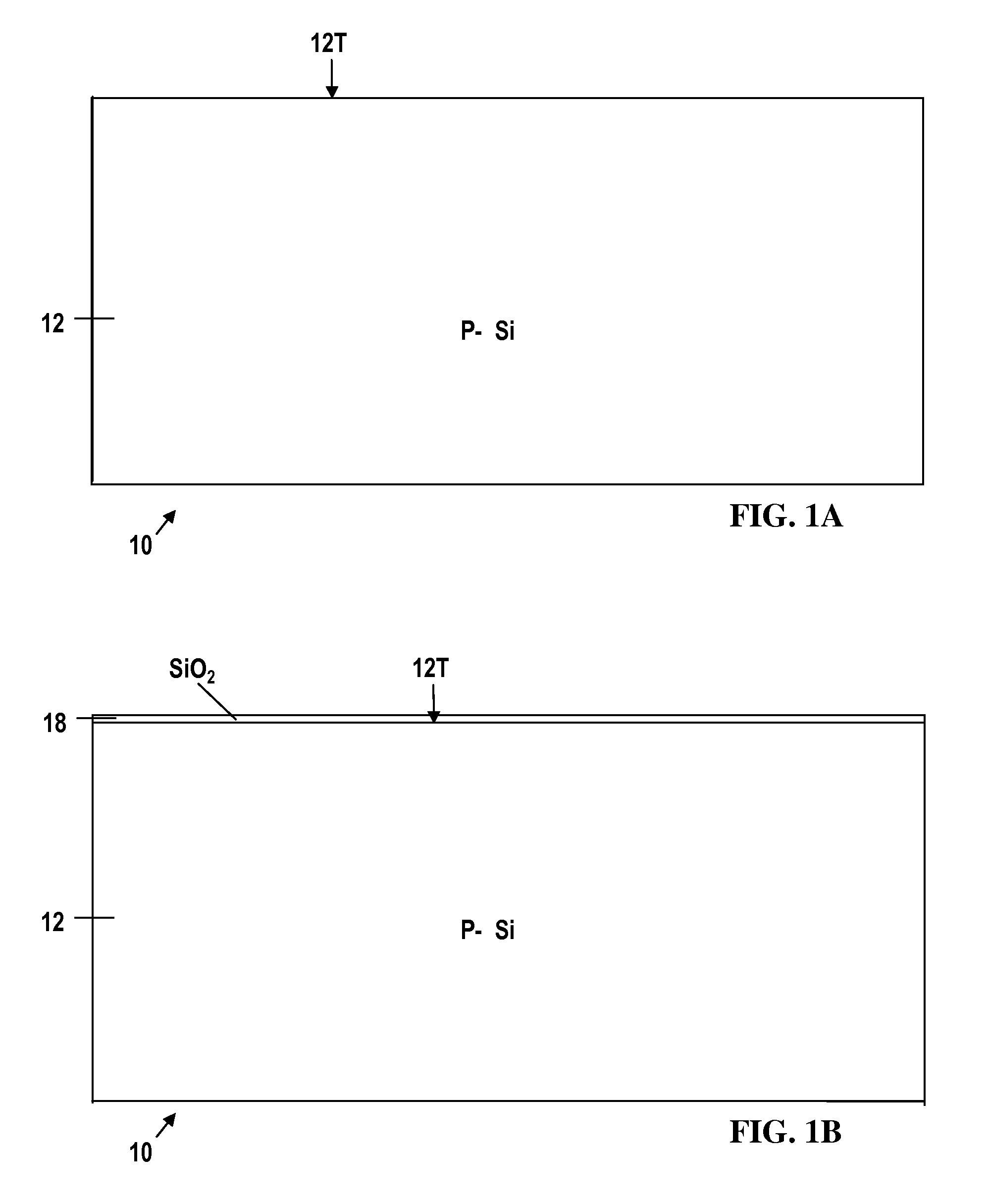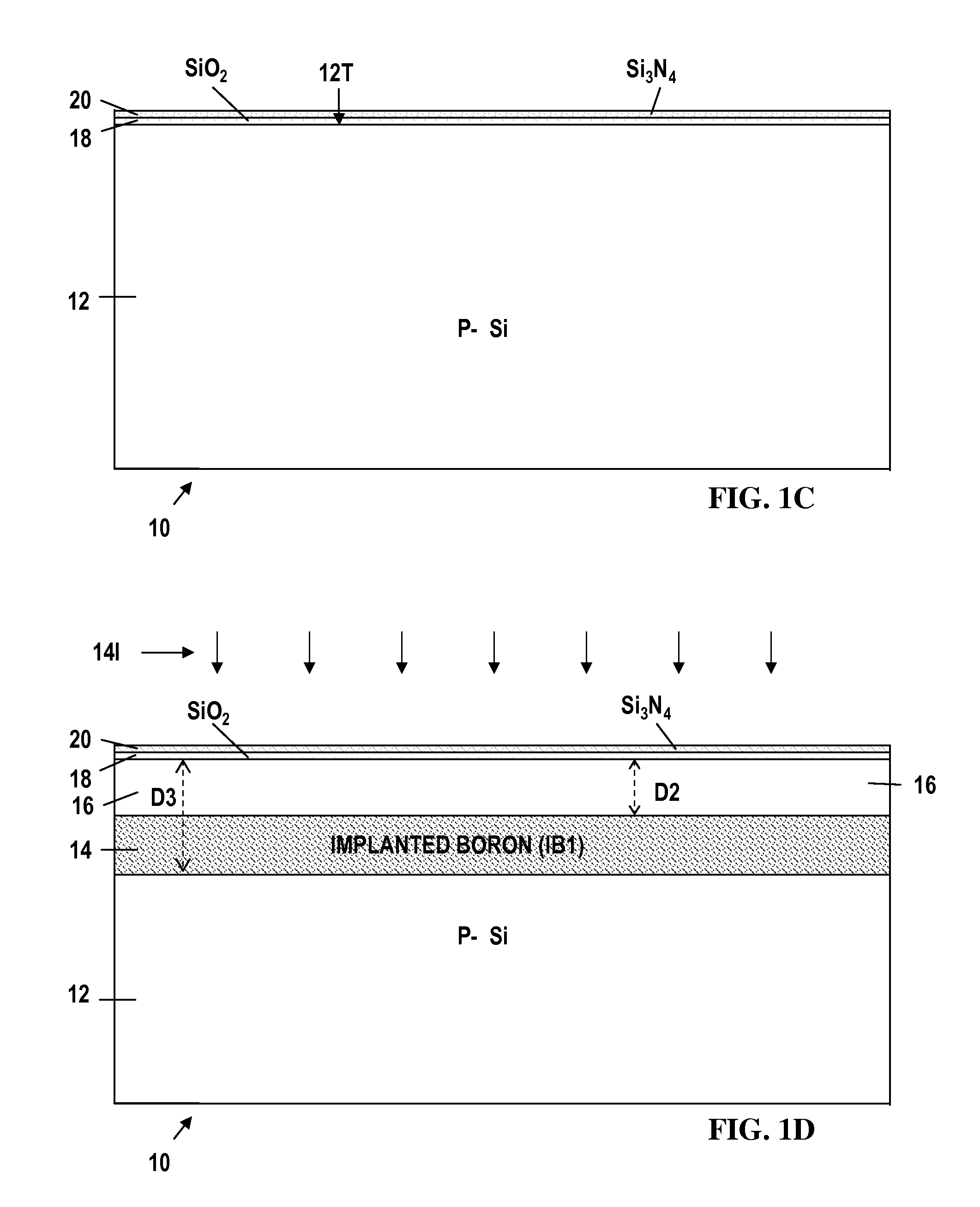Ultra Thin Channel (UTC) MOSFET Structure Formed on BOX Regions Having Different Depths and Different Thicknesses Beneath the UTC and SourceDrain Regions and Method of Manufacture Thereof
a mosfet and ultra-thin technology, applied in the direction of semiconductor devices, electrical devices, transistors, etc., can solve the problems of loss of performance due to inefficient transfer of stress to the channel, inability to manufacture, and undesirable thin boxes in soi cmos devices, etc., to reduce overlap capacitance, gate to, and eliminate variations in channel strain
- Summary
- Abstract
- Description
- Claims
- Application Information
AI Technical Summary
Benefits of technology
Problems solved by technology
Method used
Image
Examples
Embodiment Construction
[0029]The method of this invention provides for fabrication of a UT or a UT semiconductor-on-insulator MOSFET with high-K / metal self-aligned replacement gate and embedded source / drains using oxidized porous silicon, described below with reference to the FIGS. 1A-1W, 2 and 3.
UTC SEMOI MOSFET Embodiment and a Method of Formation Thereof
[0030]FIG. 1A shows a sectional view of a device 10 in accordance with this invention in an early stage of fabrication of a UTC SEMOI MOSFET starting in accordance with step A of FIG. 3. The method begins preferably with a bulk substrate 12 which is to be the substrate upon which a SEMOI structure is to be formed. An insulator in the form of a Buried OXide (BOX) layer will be formed on or in the bulk substrate 12 at some point in the process. The SEMOI structure will be a semiconductor layer formed on an insulator which is formed on the bulk substrate 12. Heretofore the most commonly used SEMOI structures have employed Silicon (Si) as the semiconductor ...
PUM
 Login to View More
Login to View More Abstract
Description
Claims
Application Information
 Login to View More
Login to View More - R&D
- Intellectual Property
- Life Sciences
- Materials
- Tech Scout
- Unparalleled Data Quality
- Higher Quality Content
- 60% Fewer Hallucinations
Browse by: Latest US Patents, China's latest patents, Technical Efficacy Thesaurus, Application Domain, Technology Topic, Popular Technical Reports.
© 2025 PatSnap. All rights reserved.Legal|Privacy policy|Modern Slavery Act Transparency Statement|Sitemap|About US| Contact US: help@patsnap.com



